ECU, short for Electronic Control Unit, is the “brain” of the car. However, there is not just one ECU; in modern cars, especially in mid-to-high-end vehicles, there can be dozens of different ECUs, each serving its role as the “brain” of various systems. Some control the engine, some control the transmission, some control the lights, and some control the suspension system, etc. Today, we will discuss the ECU that controls the engine.
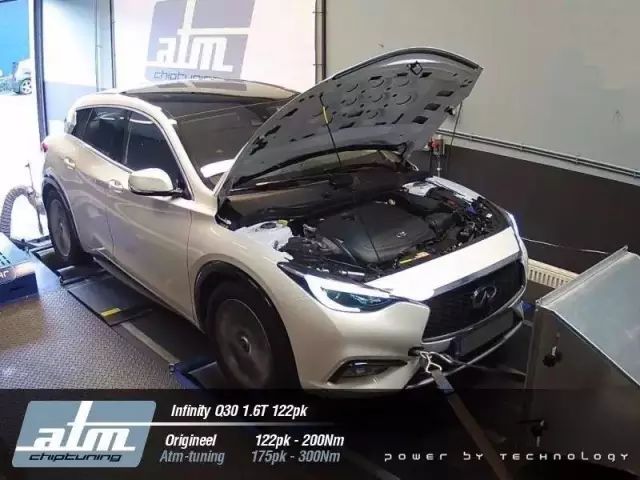
▲ 1.6T Q30, factory data is 122hp and 200Nm, upgraded ECU boosts it to 175hp and 300Nm
In the tuning circle, ECU remapping has gradually become popular from a niche hobby. While maintaining the vehicle’s original state, simply rewriting an upgraded program can lead to a certain increase in horsepower. Let’s pose a question: why can remapping the ECU enhance horsepower?
ECU Controls More Than Your Spouse
▼
With the increasing technological sophistication of engines, various variable technologies are integrated into the body. For engines, the ECU is akin to the relationship between software and hardware in computers; thus, an engine’s operation is inseparable from the ECU’s control.
The ECU stores a fixed set of programs that define the working patterns of air-fuel ratios and ignition timing under different operating conditions of the engine. The engine is equipped with various sensors, such as oxygen sensors, speed sensors, knock sensors, and temperature sensors, which send signals to determine whether to adjust the fuel injection amount, whether to advance or delay the ignition timing, and whether to change the valve timing and its opening degree, etc. In short, the ECU is a meticulous overseer, controlling more than your spouse.
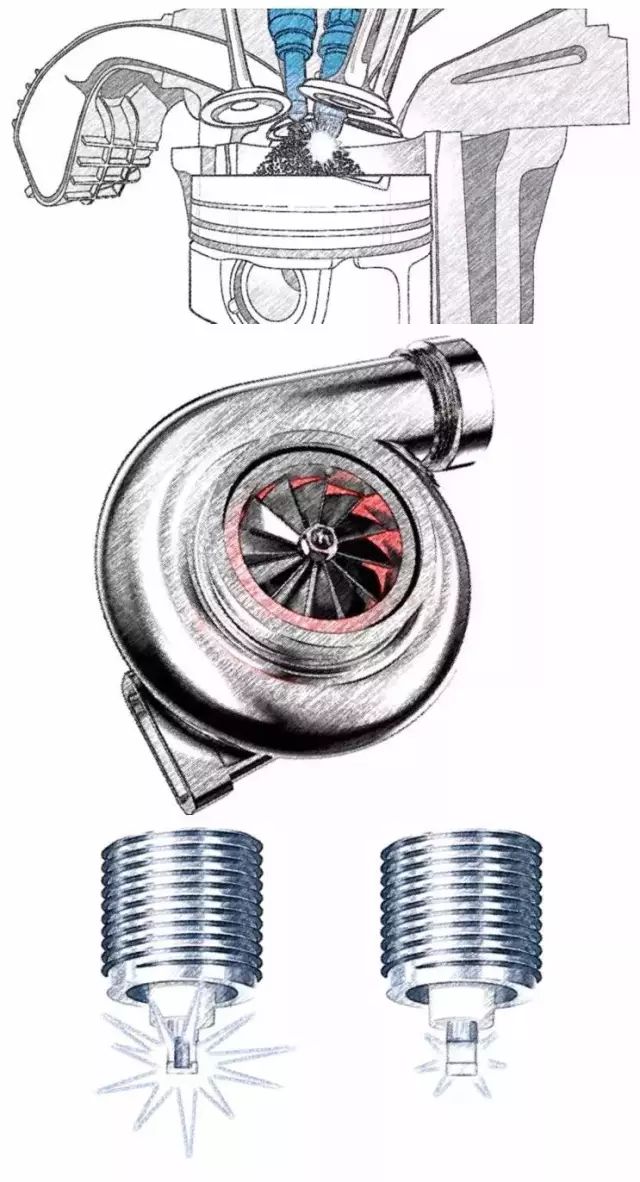
▲ By precisely controlling fuel injection, boost pressure, ignition timing, etc., ECU remapping can significantly enhance engine performance.
The ECU controls the working states of the intake and exhaust systems, ignition systems, and fuel supply systems. In turbocharged vehicles, the ECU can also control the boost pressure to alter the engine’s output. By modifying the ECU program, it can more accurately control fuel injection, ignition timing, boost pressure, etc., to enhance the combustion efficiency or power performance of the engine.
Are Engineers Just Being Lazy?
▼
The next question is, if remapping the ECU can significantly enhance engine performance, why don’t manufacturers simply maximize the output to 100%?
To answer this, you must recognize that for an ordinary consumer, a vehicle must find a balance among fuel consumption, reliability, comfort, and cost. Horsepower can be increased, but everyone has different expectations from their vehicles. Therefore, engineers typically do not extract the full potential of the engine but choose to “seal” some horsepower. As for who will unlock it, that depends on the owner’s needs, leaving room for those with higher performance aspirations to modify later.
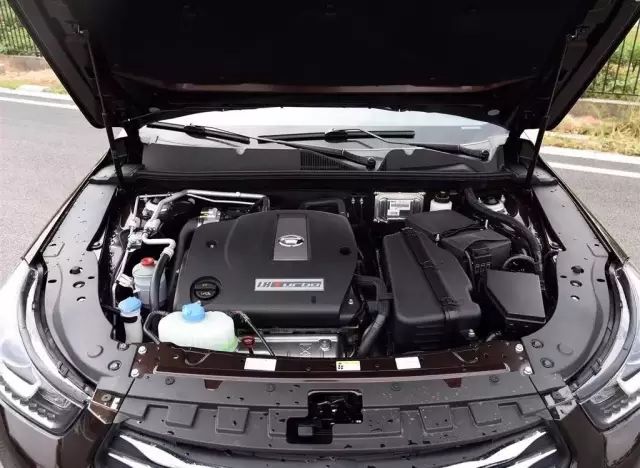
▲ The GAC Trumpchi GA6’s 1.8T engine has a very conservative ECU calibration, with the factory setting only at 0.5 bar of low boost pressure.
Regarding the factory ECU calibration, I specifically consulted an engineer from GAC Research Institute—Engineer Li. He told me that the ECU calibration process, commonly referred to as engine mapping, considers many factors, such as the climate of the vehicle’s sales area, fuel quality, overall road conditions, and driving habits, which lead to a relatively conservative ECU program design. Additionally, increasingly strict environmental regulations require manufacturers to limit engine output; for example, controlling fuel injection is very meticulous—if too little is injected at idle, it may cause instability, while too much can lead to excessive emissions. A balance is needed, and for many family vehicles, consumers are more concerned about fuel efficiency than high horsepower.

Next, we will discuss three methods of ECU remapping: direct factory remapping, external computer control, and replacement ECU.
1. Directly Remapping Factory ECU Data
The ECU remapping program is generally directly exported from the factory data, followed by various adjustments and enhancements. This method, which adjusts the original factory program, is relatively safe because many existing protective programs of the engine remain unchanged.
Some ECUs can be read and written through the OBD port, while others require the ECU to be removed and read with special equipment.
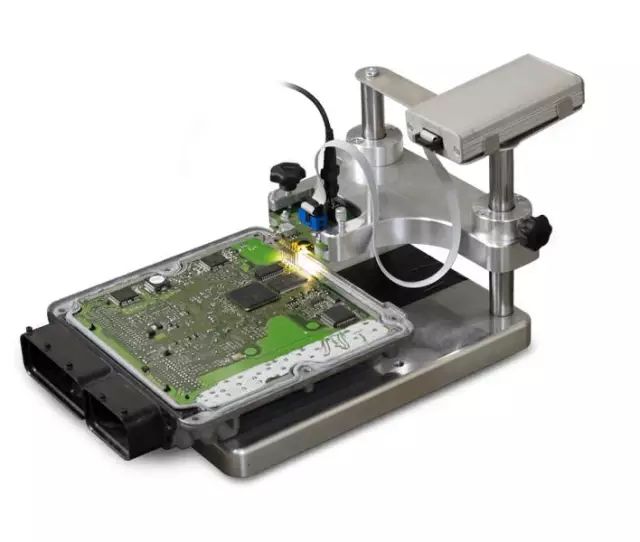
▲ Some models require the ECU to be removed and read with special equipment.
Of course, most shops in China do not have the capability to tune engines; they only read the ECU data and then upload already prepared data packages from abroad into the factory ECU, overwriting the original program. This is commonly referred to as an ECU “canned” program upgrade.
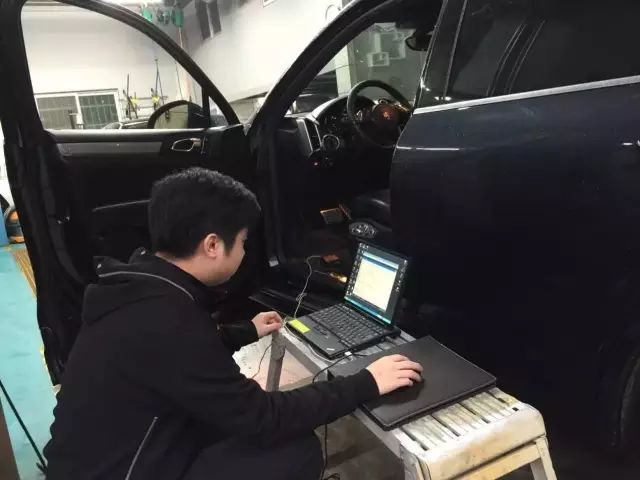
▲ I personally experienced the original factory ECU upgrade, tuning a Cayenne Turbo through the internet.
As tuning becomes more popular, some components of vehicles may also be upgraded or replaced by consumers. Since canned ECUs cannot cover these component updates, “special tuning” programs have emerged. Yang Feng, an ECU tuning technician from the famous tuning shop RACING in Guangzhou, told me that every vehicle’s age and usage conditions are different, and thus the engine’s state or the vehicle’s modification state varies. “Special tuning” involves real-time and flexible ECU programming based on the extent of your car’s hardware modifications, creating the best fit for your preferences.
2. External Computer Implantation
In recent years, we have seen many models with different power versions of the same displacement. Manufacturers, aiming to let more people choose the more profitable high-power models, have implemented dual protection for ECU reading and writing, making it not so simple to directly write ECU data as before.
This is where external computers come into play. An additional control module is added to the factory ECU so that when the sensor data returns to the factory ECU, it first passes through the external computer, which “steals” and modifies the data signal before it reaches the factory ECU. The ECU then controls the engine based on this modified signal. In simple terms, it “deceives” the factory ECU to change the ECU signal.

▲ Many Japanese cars achieve ECU tuning through external computers.
External computers were initially mainly used for Japanese cars, and these programmable external computers are generally produced by Japanese manufacturers, such as the HKS F-Con series and Greddy E-manage series. Tuning with these external computers requires on-site programming by technicians, which tests personal skills, so this method is generally only found in well-experienced tuning shops.
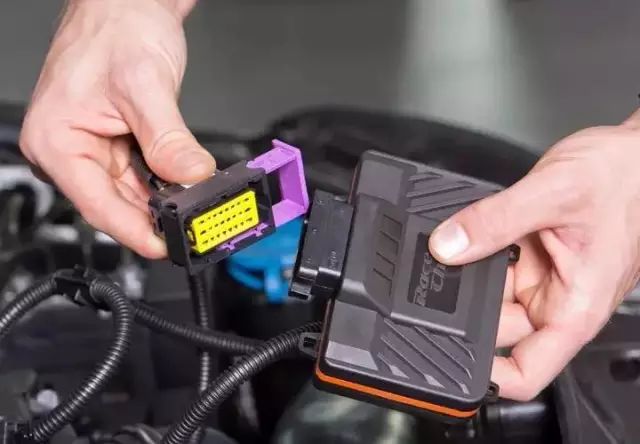
▲ Common external computers for European cars store fixed programs in a “box” that can be easily connected and installed for use.
External “boxes” for European cars are not as complex as those for Japanese cars. They store programs designed for your engine model, which cannot be changed. You can simply connect and install them for use.
However, these simple external boxes generally use “canned” programs, which means that regardless of the year or region of the model, they mostly use the same set of programs. The adjustable range is small, the performance increase is minimal, and sometimes it may even cause instability.
3. Directly Replacing the ECU
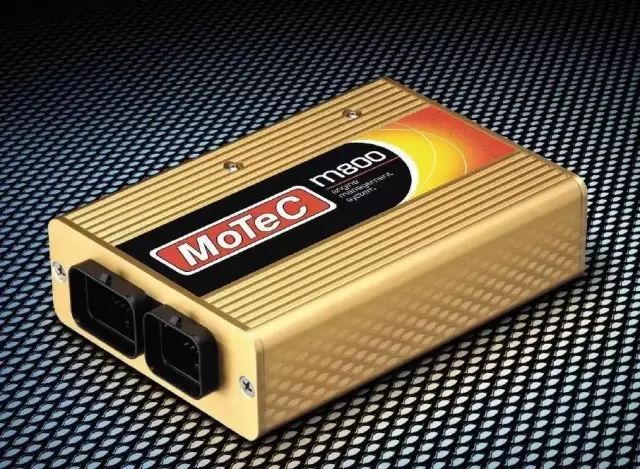
▲ Replacement ECU; when the factory ECU fails to meet hardware requirements, this competitive product is the best choice.
A replacement ECU directly changes the ECU hardware. This is common in racing and is usually paired with heavy engine hardware modifications. Since the modified engine’s operating temperature, intake volume, fuel injection amount, and compression ratio exceed the factory settings, when the engine undergoes significant modifications, the factory ECU can no longer meet the hardware requirements, making this competitive product the best choice.

▲ A racing car tuned by the famous team RACING; this heavily modified racing car chooses to replace the ECU directly.
The difficulty of this method is that it requires a very high level of expertise from engineers. Essentially, rewriting an ECU is as challenging as recalibrating an engine at the factory. Just ensuring that the vehicle can start and maintain stable idle may take several days of tuning. Therefore, non-professional racing teams are unlikely to adopt this method.
Finally, let’s briefly discuss why ECU upgrades are categorized into stages.
Stage 1 generally refers to optimizing the ECU while keeping the vehicle’s hardware in its original state, making it safer and more scientific, aimed at entry-level modification enthusiasts; Stage 2 programs usually require some simple hardware modifications, such as high-flow air filters, exhaust mid-pipes, and upgraded spark plugs; by Stage 3 and above, moderate modifications are necessary, requiring more hardware to extract higher horsepower outputs, commonly involving larger turbos, upgraded exhaust headers, and high-phase camshafts, which also tests the skills of ECU tuning technicians.
ECU remapping can indeed increase horsepower by several tens. But is every car suitable for remapping? Is higher remapping always better? Will it brick the car like a phone? Is there still a warranty after remapping? Please follow the second article, where we will answer these questions.

